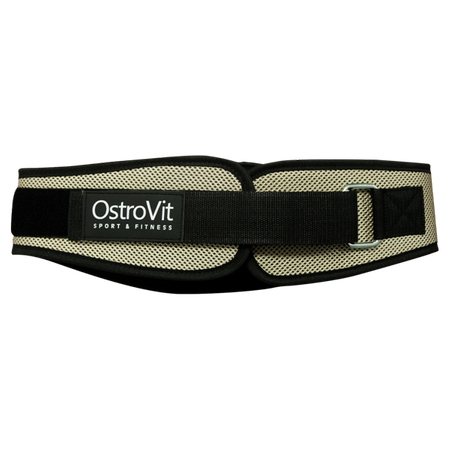Belts
Training belts are popular accessories among athletes, which are often used by physically active people during strength efforts.
The task of bodybuilding belts is to increase the safety of exercises by stabilizing the abdominal cavity and lumbar spine. This is especially important when performing workouts with a heavy load.
What is the training belt used for?
Safety is the basis for a successful workout, because many exercises, even if you know their correct technique and do them properly, can contribute to the occurrence of serious injuries. The most common cause may be high loads during strength training, which can lead to hernias, abdominal muscle tears or spinal injuries.
The solution to these problems can be a training belt, also called a bodybuilding belt. It is a product, which is constructed in such a way as to support the abdominal muscles and protect the lumbar spine, and also provide stabilization of the lower back.
How can a training belt protect against injuries?
The belt for the gym is distinguished by the fact that at the front, i.e. in the place intended for the abdominal cavity, it is narrower, while at the back - wider. When lifting heavy weights, the pressure in the abdomen increases, but the surrounding structures are not always strong enough. Then many serious injuries and damage can occur. The belt can therefore have a stabilizing function - it can protect the abdomen during exercise and protect the lower spine.
Advantages of using bodybuilding belts
Proper and skillful use of training belts can have a positive effect on the exercises performed, i.a.:
- Bodybuilding belt can increase the safety of strength efforts - it can stabilize the spine, support the abdominal cavity and thus minimize the risk of injuries.
- The training belt can be helpful in performing many exercises and has a universal character.
A well-fitting belt for the gym should not limit the freedom of movement, so it should not "interfere" when performing training.
When is it worth using training belts?
Training belts should be used when performing exercises with a significant load. The product can work primarily among supporters of strength disciplines, i.a. during exercises such as:
- barbell squats,
- deadlift,
- squeezing the barbell lying down from behind the neck, above the head or from in front of the chest,
- weight lifting.
The training belt is recommended primarily among people who perform complex exercises during training, as well as among those who often work with heavy loads.
How to choose the right bodybuilding belt?
A suitable training belt should be made of durable and resistant to mechanical damage and abrasion material. Most often, bodybuilding belts are made of natural leather or high quality plastics.
The belt must be fitted to the physique and wide enough to effectively support the athlete's spine and abdominal cavity.
The key to choosing the right belt is to adjust its circumference - for the product to be effective, it should provide proper tightening of the body, but it must not be too tightly clamped. Otherwise, it will not affect the relief of the lumbar spine and may even increase the risk of injury. In most belts, buckle or velcro can allow free adjustment and adaptation of the product to the individual needs of the athlete.
How do I put on and use training belts?
Bodybuilding belts can only be helpful if used correctly. So how should you use the training belt and how to put it on?
The bodybuilding belt should be put exactly on the navel line. It is important to inhale as much as possible immediately before putting it on and slightly pull in the belly and then fasten the product tightly. However, the belt adjacent to the body should allow free inhalation and exhalation, because proper diaphragmatic breathing is a key element of the exercises performed - with the training belt during breathing should move mainly the chest, not the abdomen. Also, do not do training on apnea.
It is also worth remembering that as important as the safety of training is the comfort of the athlete. The belt, although it should be tightly fastened, should not restrict movement.
Bodybuilding belts should also not be used during the entire workout, but only during exercises with the highest load, so it may be a good solution to remove the product from the body between exercises.
When is it better not to use training belts?
Training belts, despite numerous advantages, are not always recommended among athletes. Who should give up using bodybuilding belts?
Training belts should not be used primarily by beginner lovers of strength sports who have little experience in training with a heavy load.
Since proper breathing is extremely important when using belts, it is crucial to learn diaphragmatic breathing. In addition, it is worth first mastering the correct way of tensing muscles and the right technique of performing exercises, so that the use of training belts can contribute to achieving the desired effects, and not increasing the risk of injury.
In addition, training belts should only be used during exercises performed with a heavy load. It is not recommended to use the product for a long time and too often, because excessive use of bodybuilding belts may contribute to the weakening of stabilizing muscles.
Training belts should also not be used by people who suffer from hernia or hypertension problems.

